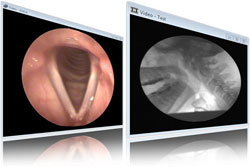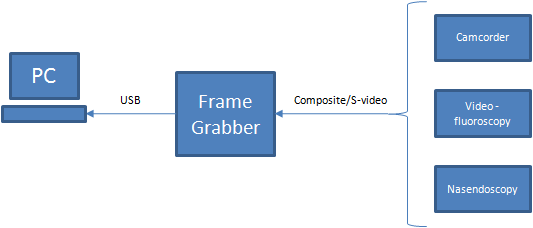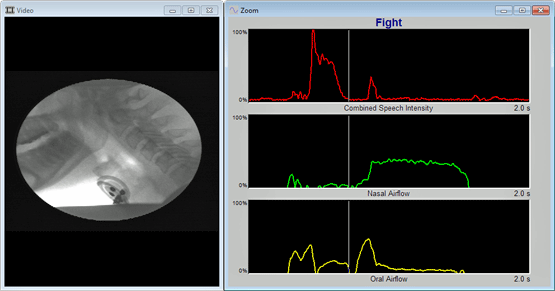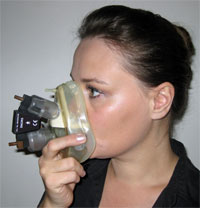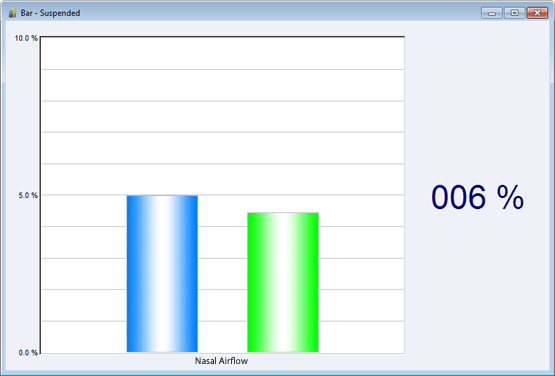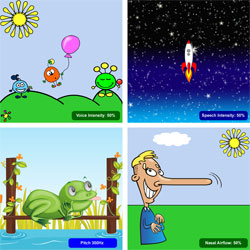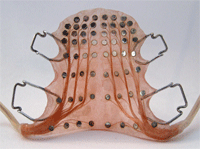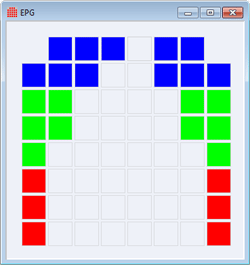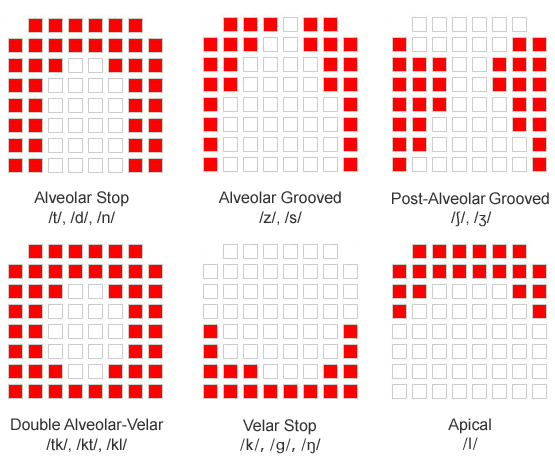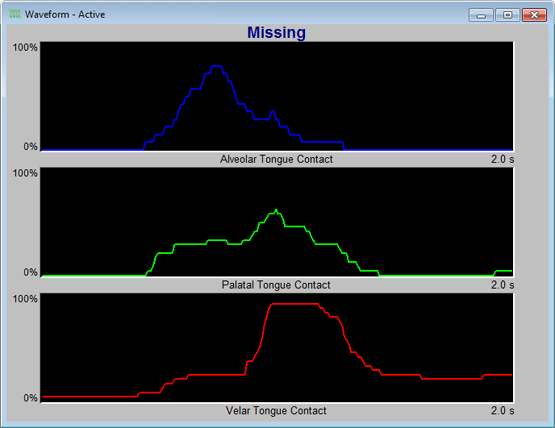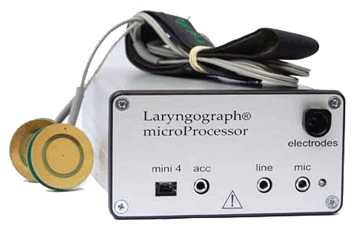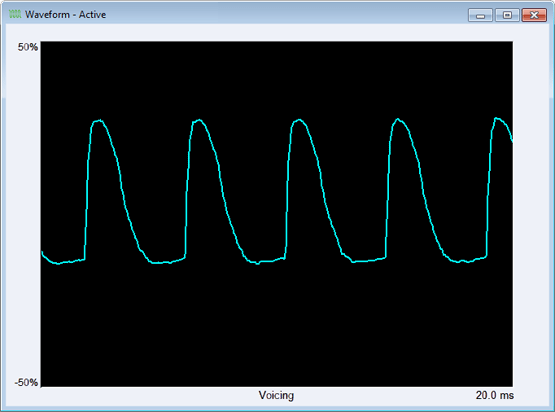
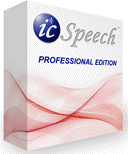
icSpeech Professional Edition - Speech Therapy
Speech therapy software for the multi-parameter assessment of speech
icSpeech Professional Edition extends the functionality of the award winning icSpeech Standard Edition. Its flexible plug & play architecture lets you view and record:
- Videofluoroscopy and endoscopy images.
- Nasal and oral airflow.
- Tongue-palate contact.
- Extended voicing parameters
icSpeech Pro Demo Version - This is the full version of the software. You can use it for a limited amount of time
Record videofluoroscopy and endoscopy images direct to your PC
With icSpeech Professional Edition you can easily record high resolution videofluoroscopy and endoscopy images direct to your PC. With this feature your can:
- Combine video with audio, and other speech data.
- Replace outdated VHS video recorders.
- Convert existing VHS recordings to digital.
- Quickly save recordings to HDD or DVD.
- Easily share recordings with others.
- Achieve greater viewing flexibility:
- rapid search facility.
- frame-by-frame advance.
- zoom, pan and print images.
How does it work?
icSpeech Professional Edition uses a device known as a frame grabber to capture the high resolution analogue images. The frame grabber simply connects between the video source and your PC, as shown in the following diagram:
Example: combining videofluoroscopy with airflow
By combining multi-parameter speech data with video, it is often possible to reveal phenomena that are not evident in the image alone. As an example, the combination of airflow studies and the x-ray technique of videofluoroscopy reveal the relationship between the actual speech mechanism and the structures displayed within the videofluoroscopic image.
The above example was taken from a subject uttering the word “Fight”. As can be seen, during the diphthong, the velum is raised and clearly makes contact with the posterior pharyngeal wall. It is apparent, therefore, that successful velopharyngeal closure has been achieved in this case.
If this expectation is compared with the airflow present at the cursor position, it is seen to be exclusively through the oral cavity, thus supporting the radiographic finding of correct velopharyngeal function. In this particular case, it is likely that no further imaging assessment need be undertaken, since confidence is much greater in the multi-parameter assessment than with the imaging technique alone.
However, if a significant amount of nasal airflow had been present, it would have suggested that either the videofluoroscopic image had been misinterpreted or the defect in the mechanism is not visible from the view being studied. In this case, further assessment would be required to determine the cause of velopharyngeal incompetence.
Measuring nasal and oral airflow
The simultaneous measurement of both nasal and oral airflow during speech provides a measure of velopharyngeal closure. This is often useful when working with patients who have velopharyngeal incompetence (VPI).
Anemometer
An anemometer is a device that measures airflow during speech. icSpeech Professional Edition is compatible with SNORS+, an anemometer that provides a wealth of aerodynamic and acoustic information. SNORS+ uses a special lightweight, transparent mask that is held snugly over the nose and mouth.
With icSpeech Professional Edition you can view airflow in a number of different ways:
- Waveforms.
- Bar charts.
- Games.
Waveform displays
The real-time Waveform display is often used in therapy because it allows the patient to see the dynamics of their speech during the utterance of complete words or phrases.
Waveforms scan across the display from right to left, with air flow plotted vertically and time horizontally. The time taken to scan the entire display can be adjusted to suit the patients needs.
The above example shows nasal airflow (green) and oral airflow (yellow) for the word "cheese". As can be seen, the amount of nasal air escape during the utterance is small. The rise in both nasal and oral airflow at the end of the utterance is due to respiration.
You can also save the waveform display and perform precise measurements on a range of aerodynamic and acoustic parameters:
- Nasal airflow.
- Oral airflow.
- Respiration.
- Aerodynamic nasalance.
- Nasal speech.
- Oral speech.
- Acoustic nasalance.
Aerodynamic Nasalance is the ratio of nasal airflow to total airflow (expressed as a percentage), and should not be confused with acoustic nasalance. The aerodynamic nasalance calculated by icSpeech provides a measure of effective velopharyngeal closure, whereas the acoustic nasalance relates to the perceived nasality. Both measures are useful and complementary.
Bar chart displays
The real-time Bar is a useful biofeedback tool that shows a simple bar which moves upwards with increased nasal or oral airflow. This allows the patient to monitor their air escape, make corrections, and instantly see the result. Bar charts are particularly useful when working with sustained sounds.
This example shows nasal air escape (green) and a target bar (blue). Targets are adjustable bars that appear next to the active bar. Depending on the condition, patients can be encouraged to keep below, reach or exceed the target.
Games
icSpeech Professional Edition supports five interactive video games that provide fun and imaginative ways to help children learn about speech. Each game can be configured to respond in real-time to the following aerodynamic and acoustic parameters:
- Nasal airflow.
- Oral airflow.
- Respiration.
- Aerodynamic nasalance.
- Nasal speech.
- Oral speech.
- Acoustic nasalance.
Measuring tongue-palate contact
Electropalatography (EPG) measures tongue contact with the hard-palate during speech and provides both qualitative and quantitative data on the place of articulation.
EPG determines tongue-palate contact by using a special artificial palate that contains a number of electrodes embedded on its tongue-facing surface. A small electrical signal is fed to the patient, which is conducted through the tongue to any touched electrodes. These tongue-palate contact patterns are then displayed on the computer screen.
Each palate is custom-made by a dental technician and simply clips to the upper teeth. icSpeech Professional Edition supports multi-channel EPG and is compatible with the Linguagraph system.
Palatograph display
The real-time palatograph display is a useful biofeedback tool that allows the patient to visualize tongue movement during speech. Segments are arranged in palatal zones and rows to depict the individual EPG contacts.
This example illustrates the palatograph for the /s/ sound. The individual segments have been color coded to highlight the following palatal zones:
- Alveolar (blue) - front two rows.
- Palatal (green) - middle three rows.
- Velar (red) - rear three rows.
EPG contact patterns
The figure below summarizes six different EPG contact patterns observed in normal English-speaking adults when producing lingual consonants.
Waveform display
The Waveform display is often used in therapy because it allows the patient to see the dynamics of their speech during the utterance of complete words or phrases.
This example shows the Alveolar (blue), Palatal (green) and Velar (red) tongue-palate contact waveforms for the word "Missing". With icSpeech Professional Edition, up to nine waveforms can be displayed:
- Alveolar.
- Palatal.
- Velar.
- Left Contact.
- Center Contact.
- Right Contact.
- Contact Balance.
- Center-of-Gravity.
- Contact weight.
Measuring extended voicing parametersElectroglottography is a non-invasive technique of monitoring vocal fold vibration by sensing the electrical conductance between two electrodes placed on the neck, either side of the thyroid cartilage.
icSpeech Professional Edition is compatible with the Laryngograph electroglottography system. Laryngograph� extends the functionality of icSpeech by including the following voice related parameters:
- Closed Quotient.
- Jitter factor.
- Shimmer factor.
- Fx (fundamental frequency).
- Lx waveform (closed and open phases).
The above example clearly illustrates the four main features of the Lx waveform:
- Closing Phase - a steep rising edge.
- Maximum Closure - a maximum peak.
- Opening Phase - a shallow falling edge.
- Open Phase - a trough.
The relative length of these phases can be changed with voice quality. The phases 1 to 3 are often referred to collectively as the 'closed phase' since the vocal folds are in contact, to some degree, from the start of the closing phase to the end of the opening phase. There is no vocal fold contact in the open phase.
The time interval between successive closures also allows a direct measure of the fundamental period and hence the fundamental frequency Fx (fundamental frequency of excitation). The Fx frequency extracted from the Lx waveform is extremely reliable, as the waveform is unaffected by vocal tract resonance and environmental noise.
Who should use it?
icSpeech Standard Edition is an invaluable tool for anyone interested in the production of speech. It can be used by speech and language therapists or by their patients wishing to practise between sessions. It can also be used as an aid to improve singing, learning a new language or accent training.
System requirements
Operating Systems Windows 7, Vista and XPMicrophone Any PC compatible microphone (USB headset recommended)
Webcam (optional) Any USB Windows compatible webcam
Frame Grabber (optional) Microsoft WDM compatible Video inputs: Composite and S-Video Recommended Frame Grabbers
Anemometer (optional) SNORS+ Anemometer
Electropalatograph (optional) Linguagraph EPG
Electroglottograph (optional) Laryngograph
Windows: Compatible with Windows XP, Vista,7
Recommended for: Speech and Language Therapy
